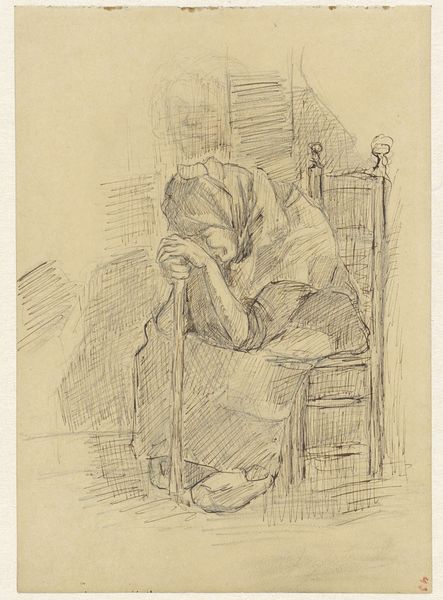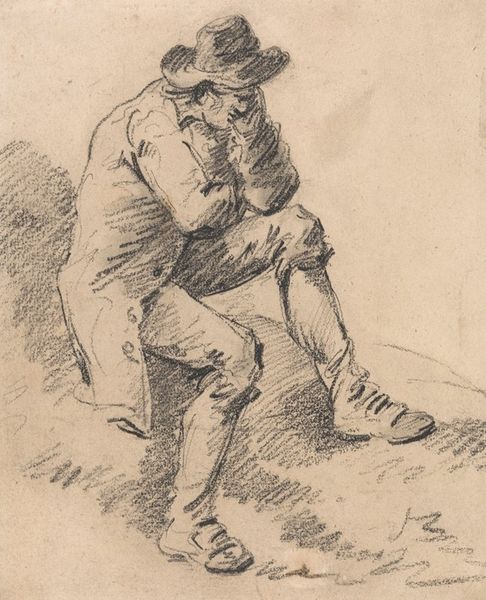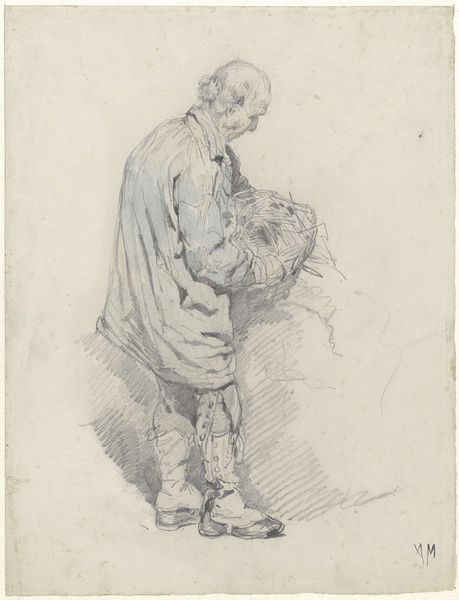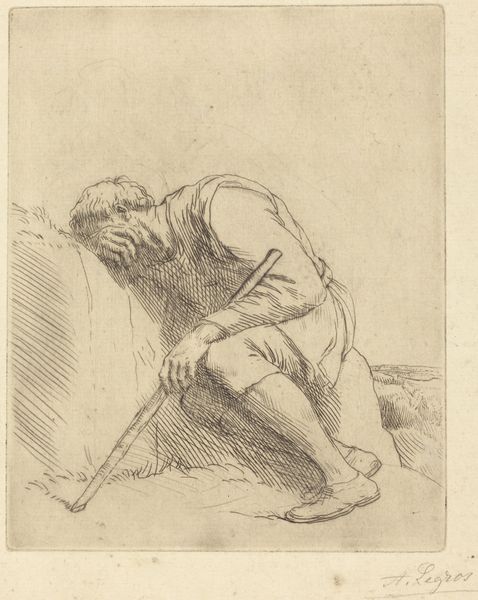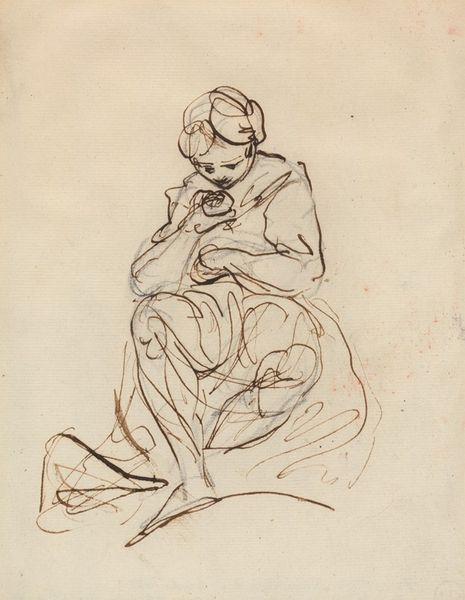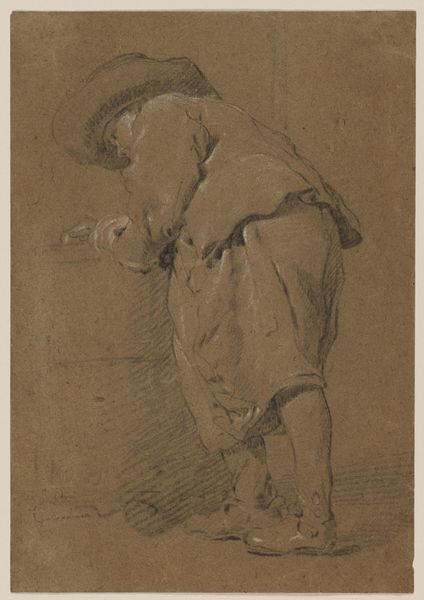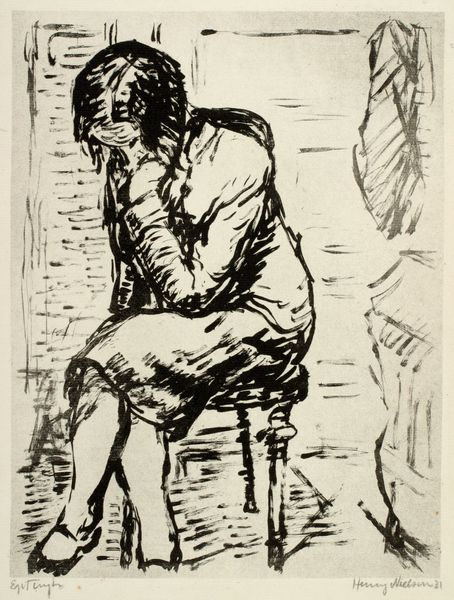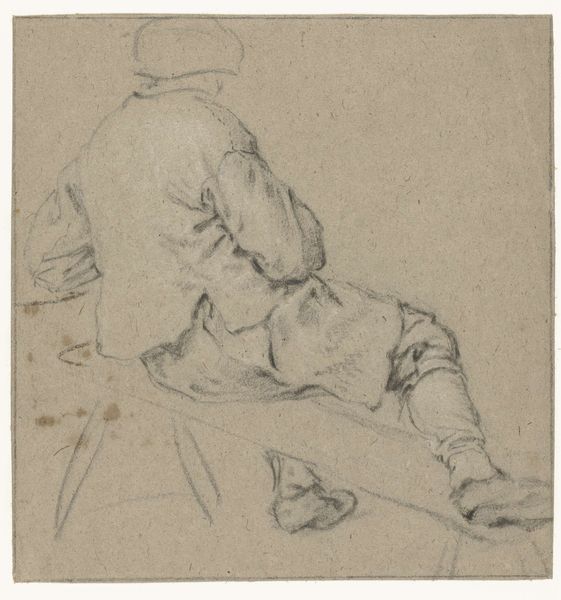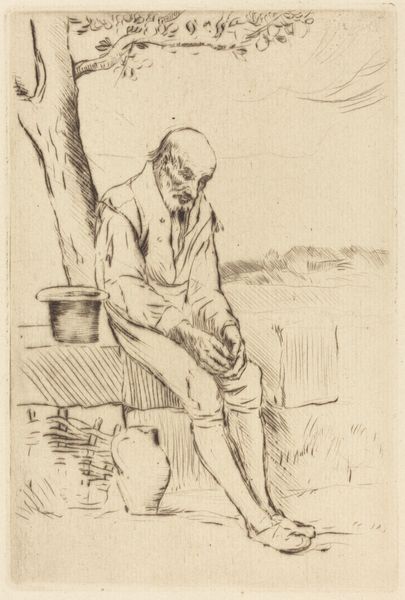
drawing
#
portrait
#
drawing
#
figuration
#
realism
Copyright: Public Domain: Artvee
Editor: Here we have "Istuva, lapioonsa nojaava mies, luonnos," which roughly translates to "Sitting Man Leaning on a Shovel, Sketch," made between 1877 and 1883 by Helene Schjerfbeck. It's a drawing, and the first thing that strikes me is how weary this figure seems. It’s more than just physical exhaustion, I think. What social commentaries or themes can be found in this work? Curator: That's a keen observation. Looking at it through a historical lens, we must consider the societal context of late 19th-century Finland. Schjerfbeck created this during a time of social upheaval and growing awareness of class divisions. The pose – head resting on his shovel – speaks to more than just physical tiredness; it’s a representation of the burdens carried by the working class, their limited social mobility. Do you notice any visual elements that might underscore this interpretation? Editor: The dark lines, especially around the figure's head and hands, seem to emphasize the weight he’s bearing. And the looseness of the sketch, somehow, adds to the feeling of transience and impermanence of his position. Curator: Precisely. The unfinished quality might reflect the precarity of working-class life at the time, which art often depicts through realism. Schjerfbeck isn't just showing us a man resting; she's showing us the socio-economic weight he carries, inviting us to consider the larger systems at play. And the inclusion of the suggestion of another figure seems relevant. How does its inclusion impact our view of the piece? Editor: Good point! The ghost of another person, who's perhaps offering solace, enhances this profound loneliness and points to universal struggles of the working class. Curator: Absolutely, this drawing becomes a powerful statement about labor, class, and human dignity. I now appreciate the artwork's capacity to provoke profound thought. Thank you! Editor: This makes me think about art's role in reflecting and influencing public consciousness around social issues even today. It was interesting seeing the work in context. Thanks.
Comments
No comments
Be the first to comment and join the conversation on the ultimate creative platform.


